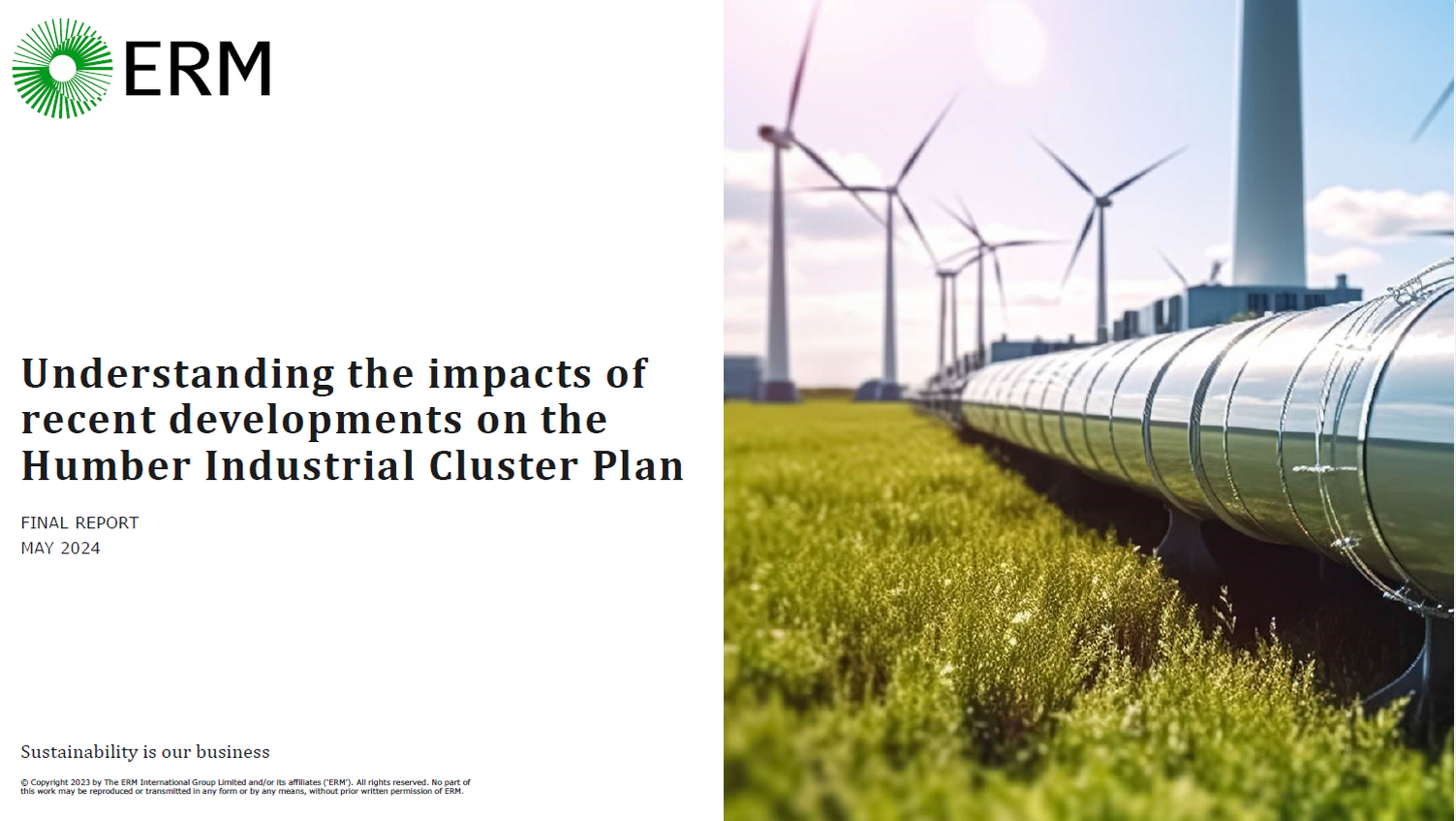Understanding the impacts of recent developments on the Humber Industrial Cluster Plan
A ERM HICP Scenarios Refresh Report
A ERM HICP Scenarios Refresh Report
A ERM HICP Scenarios Refresh Report

Decarbonising the Humber is one of the UK’s greatest opportunities and challenges as it strives to reach net zero by 2050. A new report published 5th June 2024 explains what the Humber Industrial Cluster is, what strategic developments have been announced since their Cluster Plan was published last year and how these developments impact on the region’s pathway to net zero.
The Humber is the largest source of industrial emissions, and it currently supports over 360,000 jobs in energy intensive traditional sectors including Iron and steel, power production, refining and manufacturing. However, the Humber has an abundance of low carbon resources that can be utilised to create a low carbon hub of the future which can help decarbonise both the Humber and the wider UK.
Published in 2023, the Humber Industrial Cluster Plan (HICP) provided a blueprint of mandates to enable decarbonisation in the Humber. This included actions such as large-scale carbon capture and storage (CCS) and hydrogen production, storage and distribution. All of which would require significant public and private investment in the region.
Silvian Baltac, Partner at ERM, said ‘This report examines the impacts that recent policy and project developments have on the scenarios and vision explored in the Humber Industrial Cluster Plan published in March 2023. Thanks to the IDRIC Funding and support from the University of Lincoln, CATCH and local stakeholders, ERM was able to re-run our modelling tools and provide a series of updated scenarios and analysis.’
The impact is clear: delays to infrastructure are expected to result in 6-10 MtCO2 additional emissions by 2030 compared to the original scenarios. However, the vision is not lost. The Humber can still reach net zero by 2040. It can still become a hub of CCS, hydrogen and low carbon technology which will support the UK to reach net zero by 2050. However, to ensure this can be achieved, the mandates from HICP need to be realised through Government support and continued private investment.
Katie Hedges, Director of Low Carbon Strategy and Membership, CATCH said ‘Our goal was to refresh and present the cluster’s long-term contribution to meeting UK net zero targets, our impact over time with access to CO2 storage, the economic impact and how we will address barriers to deployment. This information supports all deployment projects and the Humber Energy Board and ultimately positions the Humber for track 2 success in the cluster sequencing competition.’
Prof Joe Howe, Joe Howe, Zero Humber Professor of Industrial Decarbonisation, University of Lincoln added, “The transition to low carbon industry is a huge opportunity for the Humber region and this publication, funded by IDRIC, demonstrates how the clusters commitment to the energy transition is proceeding at pace. I am delighted to see the Humber Cluster taking the lead in developing cost-effective decarbonisation plans that tackle the emissions challenge UK industry faces. These pathways enable the region to further cement its reputation for being global leader in industrial decarbonisation.”
Read the report here
